So we jumped in the Radio Rescue Vehicle and headed East. We got to Burns and turned South. Stein's could be seen in the distance. The valley is lush surrounded by dry, desert hills. It is a paradise for birds - and mosquitoes.
We stopped along side of the deserted road. Boy! There are sure a lot of gnats (needing my reading glasses). Thousands of - hey wait a minute - mosquitoes! We could not get back in the truck fast enough, followed by the swarm. CLOSE THE DOOR! Maybe that is why the radios were still there. All of the potential buyers had been eaten.
I guess that I was occupied swatting since I forgot to take any pictures of Diamond. Maybe I just did not want to remember. I am sure that it is a nice place, sometimes, but you could not pay me enough to live there.
The Saba Freiburg Automatic 3DS is pictured above sitting on a Arabella console which I was talked into taking for $50. There just wasn't much time to negotiate. By this time I was feeling about a quart low. Nothing a gallon of cortisone couldn't fix - I hoped.
But, hey, the radio still had the sales tag on it, right in front of a woofer where it would bob about like in the wind, but more on that later.
We were out of there.
None of the radios worked - "They did work" when the sellers family brought them home from Germany. They weren't in the US military, so I am not sure how they would have acquired the US model 410 IN Germany. Maybe a person could just buy the export model. From experience I knew that finding export models of famous US manufactures in the US is rare. Finding either of these radios anywhere today is also rare and potentially costly. I was happy with the radios - and - so far showed no signs of having contacted malaria, or EEE, or ebola - - - scratch that.
The good news was that this cabinet only needed a little glue, here and there, and some touch-up on a few scratches.
This radio had what appeared to be, original, European produced tubes, some of which had become weak. A few of these have direct, US made replacements. Some have US replacements that are similar. I replaced the weak tubes with exact replacement types by the appropriate manufacture. For example, a Telefunken ECC83 would be replaced with a Telefunken ECC83 rather than a US 12AX7, which would work just as well. I like to keep unusual radios as original as possible while still being reliable.
It also needed a handful of the hard to find European panel lamps. Little grain-of-wheat lamps can be installed or even fitted into screw bases but lately I found some direct replacements. Cleaning of contacts, of which there are MANY, and lubrication can take a few hrs. Did I mention - DO NOT Break a dial string (!)? Yeah, I learned that on the 400 I worked on earlier:
https://www.russoldradios.com/blog/40-old-radios
All of the electrolytic filters were restuffed with 450V Nicheon caps. There are some motor-run caps in all of these motor driven, automatic models. I only replaced the ones on the 400 (link above) since the originals tested OK and finding the correct AC cap in my parts stash was unlikely. ESR seemed to be low (OK) so, if one of the tuning motors began to run slow I would replace them later with correct AC types.
First, take a look at the test cables I built, above. You might be able to get by with a bunch of clip-leads - no, you are going to blow everything up, better build the cables. One cable (not shown) is just a speaker cable extension. You really need the speakers for alignment and you don't want to remove them from the cabinet if it can be avoided. The top cable gives you all of the test points that you will need for alignment, As you can see it is terminated into a 7-pin miniature tube socket, so you need to find a 7-pin male connector. The lower cable allows remote connection to the multiplex adapter port. This is very helpful for working on the adapter. The connections are speced out in the manual. If you do not have the manual I would strongly advise you to not attempt alignment. This cable will work with the 410 as well. (Interesting note that I had been told that the test port on the 400 was for a multiplex adapter like on the 410 - it isn't.) The test/alignment cable will also work with the 400US. Alignment documents can be a little hard to find. Saba did not encourage field alignment, at least on the earlier models.
Though few of these radios still have the remote, or they never had one, they had the capability to use a wired remote which included tuning, volume and other functions, depending on model. I have only seen pictures of the remote.
When finished I gave the Grundig to a friend. It was a good prep for striping the Saba. I have dealt with thin poly finishes before by applying many coats of stripper slowly removing the finish. The poly is very resistant to chemical strippers and the veneer would not stand up to much physical abrasion especially with the existing damage. So, you can sand the cabinet when it is removed but sanding the poly off was out of the question.
I started in the morning and after 2 or more applications, not much progress was made. The sun was approaching noon and the temperature was rising . I was both annoyed and impatient so I applied the stripper again. It began to bubble and steam quite vigorously. I though that this was going to be a waste of stripper - - but the poly began to peal up! What resulted was large pieces of the foam-like substance I am holding above. It still took a day and most of a gallon of stripper but I managed to get the poly off.
A note:
Good strippers are hazardous in many ways. "Green" strippers are usually too weak to remove poly finishes - or any finishes - and if they do work the resulting material is no longer "green" since it includes the old finish, not to mention the fact that you generally have to use much more of the ineffective stripper to accomplish anything. Most of the MEK strippers have been removed from the shelves at the big box stores. This is likely an attempt to avoid litigation from injuries caused by improper use - or - possibly, proper use. If they are worried about it, you should be too. If a job can't be done avoiding contact with the material and fumes - DON"T DO IT.
This cabinet is very much like the one on the earlier 400. The only significant difference, besides the finish, is the use of white-wood strips used to high-lite the leading edge (front) where as the 400 used brass (colored) metal trim. The wood is easier to fix but I think the metal looks better.
Saba named series of radios after German cities. The top of the line was named Freiburg. This must have been an annoyance to the lesser named towns, or maybe not. Anyway this US import model was called THE 410US Continental but the cabinet is stamped Frieburg which makes sense because it is very similar to the domestic (German) Freiburg models . This US model is similar to the Continental 410USE for the European market.
Hey, I have a cure for that speaker separation issue - later.
I found an owners manual for the US model which was in English. It had service information/alignment that was translated from German. This is good BUT the translation is literal. It can take a while to understand the meanings, for example: "Tune L283 subcritical" which means detune L283 from it's peak. Inversely "Tune L283 critical" means, peak the output. This can take a little interpolation but it was a lot easier than trying to read German.
I moved the Christmas(?) sale tag slightly to the left to try to keep it from dancing around in front of the woofer. It also rattled a bit. Only drawback is a slightly less-faded spot where it was.
I still need to try to cast some replacement side-speaker grills. These seem to be easily broken and I need 3 of them.
I would like to thank Thorsten Michael Ritzka for his help with finding schematics
It has been a very busy summer - sorry. Watch for a posting on the $65 Scott Phantom restoration, soon.




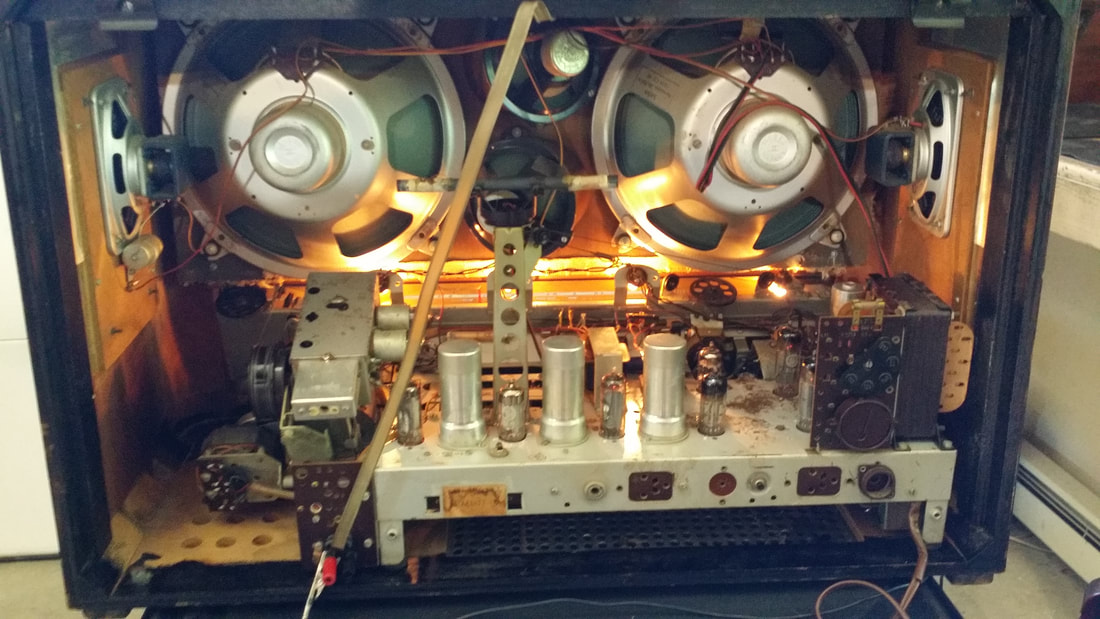





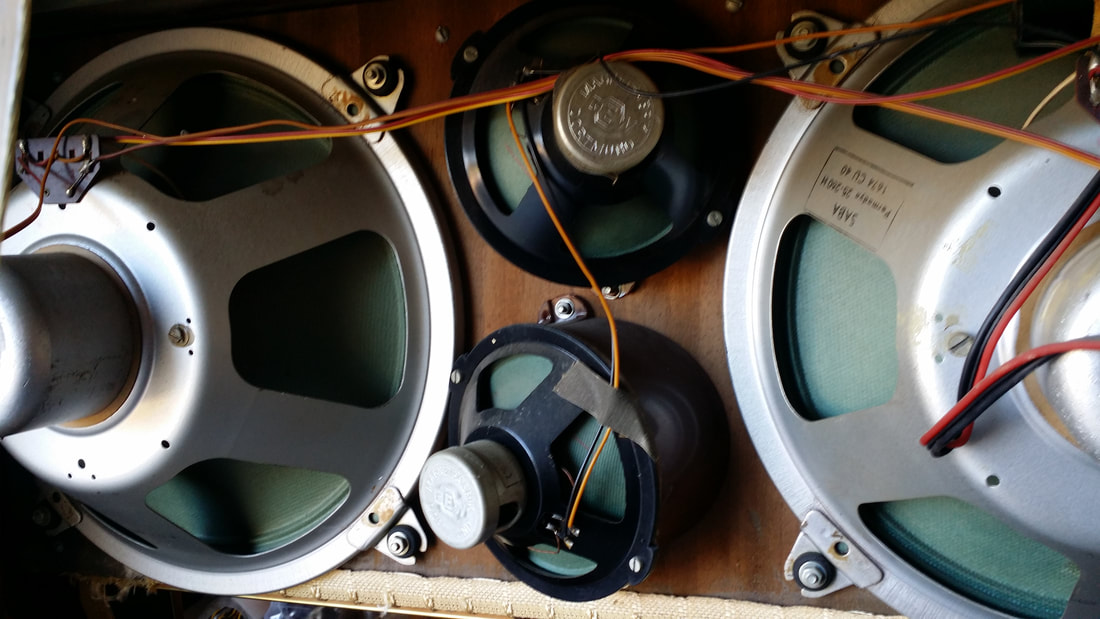

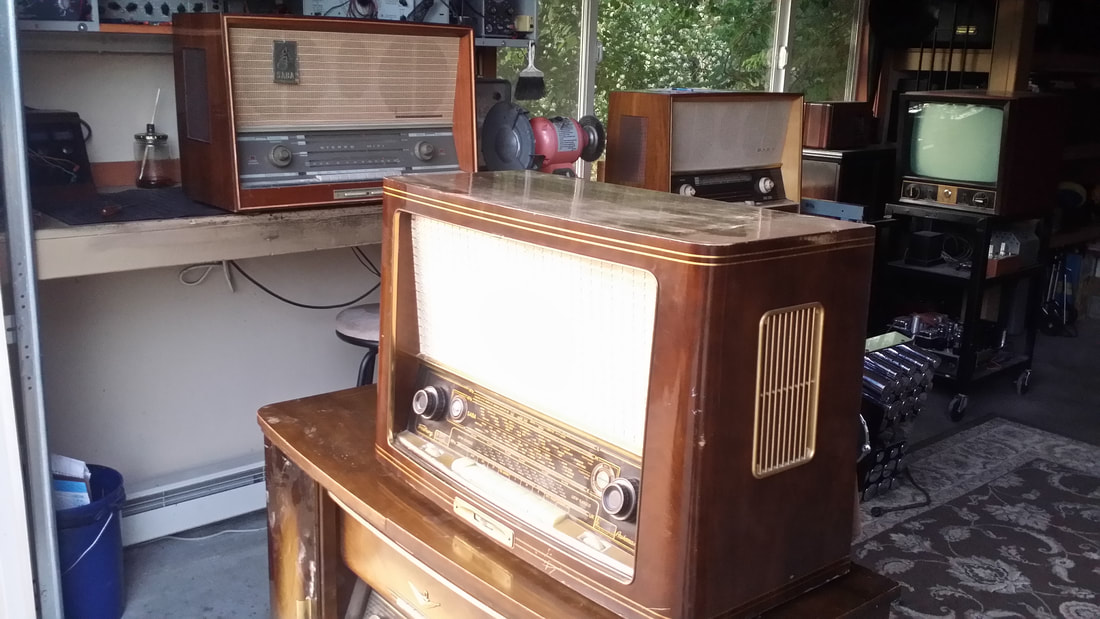


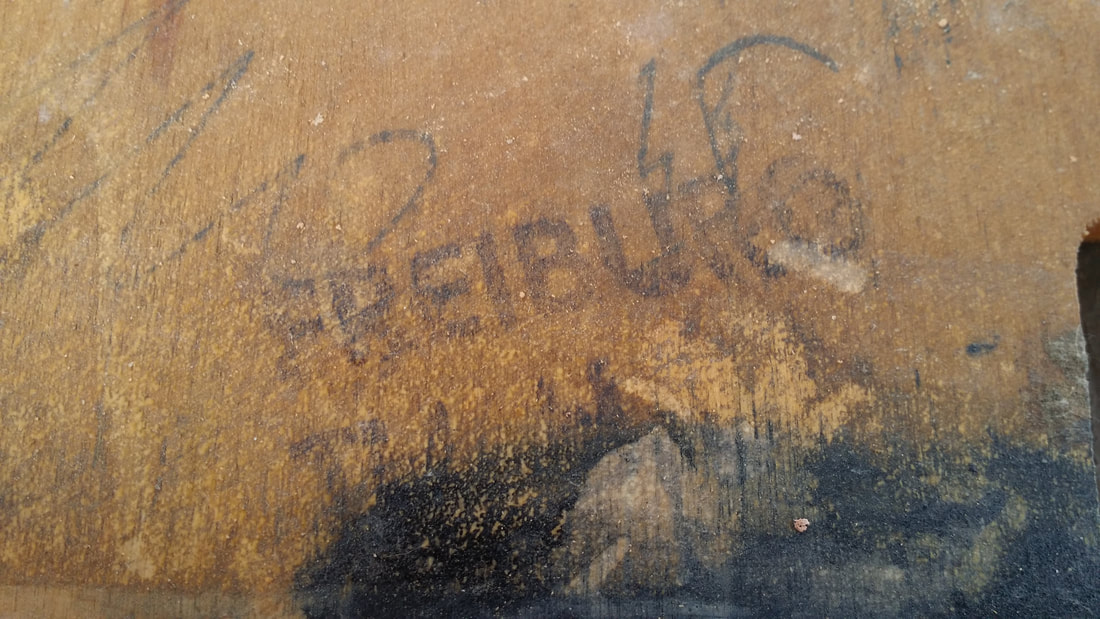
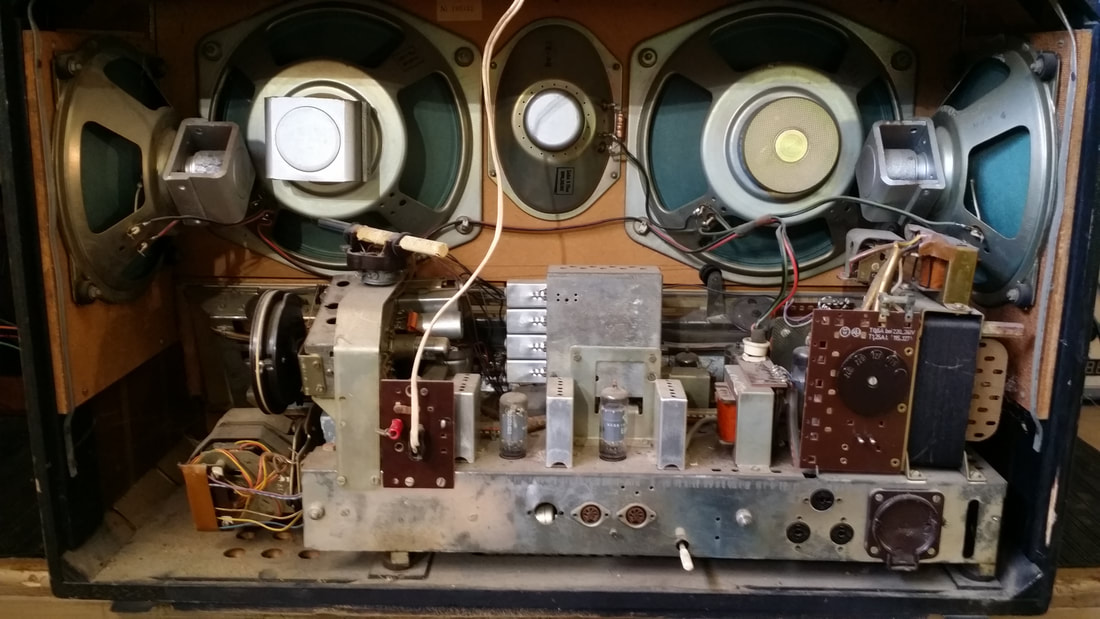

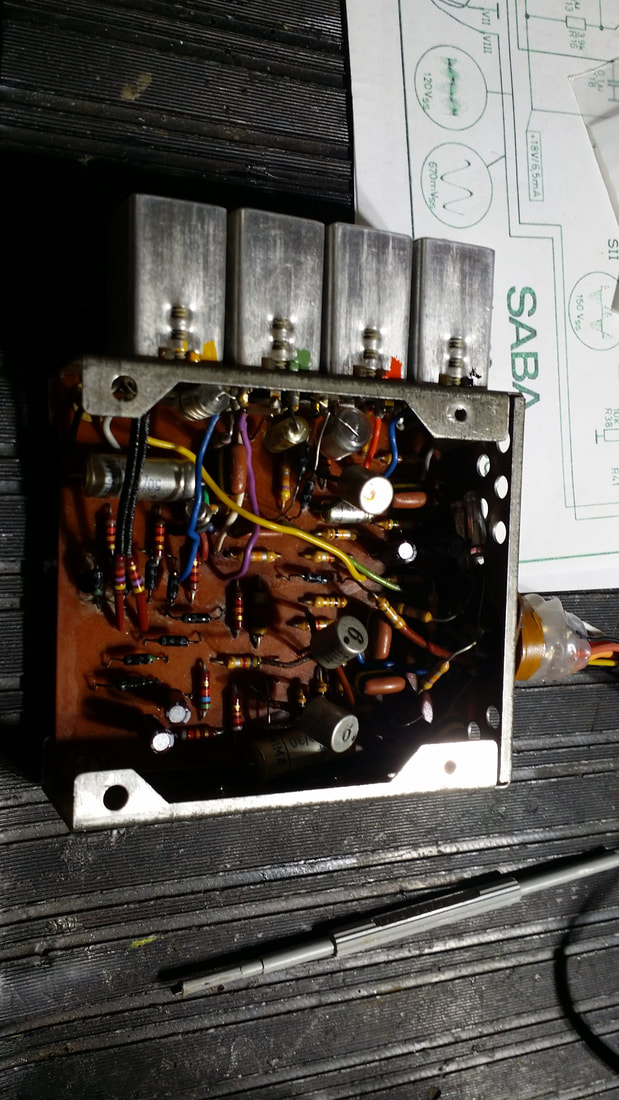
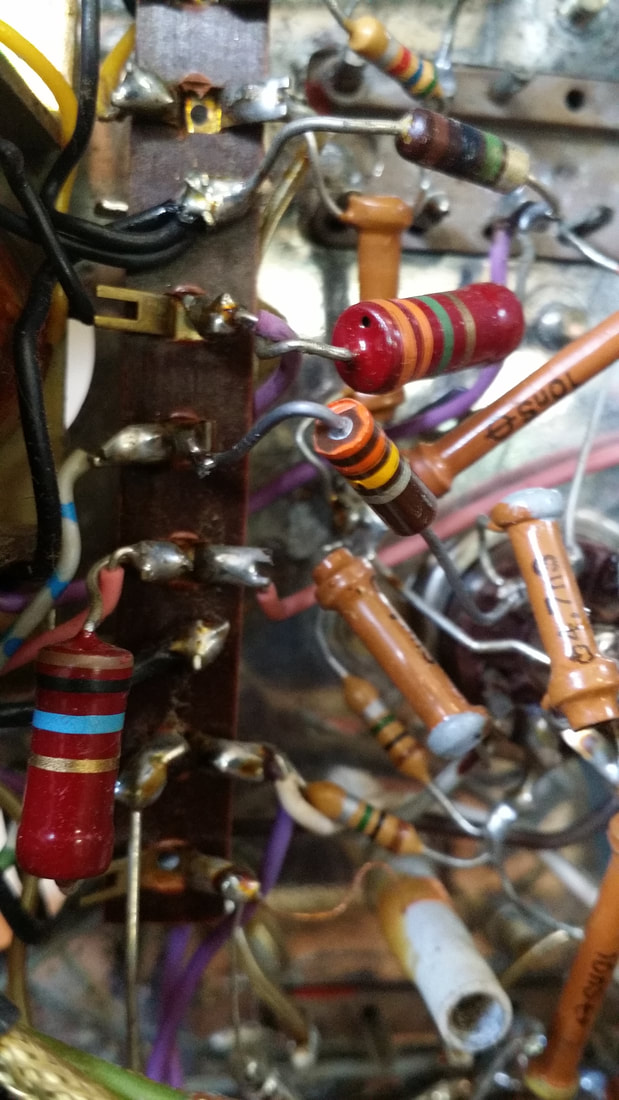




 RSS Feed
RSS Feed